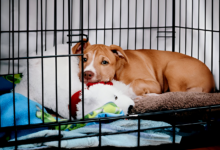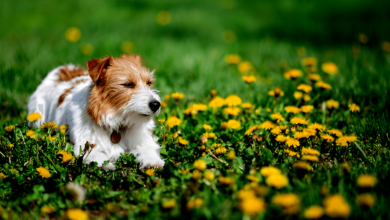
How to Make Your Puppy’s First Bath a Positive Experience
Though giving your little bundle of fur a wash may seem easy, there are several obstacles to overcome in order to make them spotless. It’s common for new dog owners to have inquiries.
Bathing a Puppy’s First Bath?
Choosing the proper shampoo and brush for your dog and deciding how frequently to wash them might be overwhelming, but that’s a typical feeling when it comes to bath time. We’re going to walk you through it, step by step.
When can puppies have their first bath?
A puppy shouldn’t get its first bath until they are about eight weeks old. This is a result of their inability to control their body temperature and their propensity to become cold rapidly. Although it’s usually a good idea to postpone a puppy’s first bath, they may still be cleaned with a moist towel if necessary.
Read More : How to Train Your Anxious or Hyperactive Dog 6 Best Training Tips
If you believe your puppy need it, you may start considering this after you bring them home.Consult your veterinarian if you’re still unsure about when to give your puppy a wash.
How often should you bathe a puppy?
The response is “whenever they need it,” albeit once a month is often the best time. Depending on your preferences, your dog’s demands, their coat type, and their activities, this may vary. It’s up to you to make sure you’re using a mild, dog-specific shampoo, properly rinsing, and drying them.
What you will need for your puppy’s first bath
When considering the best way to wash a dog, we need a simple shopping list. These are the essentials for giving your dog a wash.
- A place to give your pet a wash. This might be a wet room, a dog bath with a specific function, or a shower cubicle. Just make sure you aren’t in a chilly place, the flooring isn’t slick, and you have access to warm water.
-
Towels
-
Puppy shampoo
- For dogs with lengthy hair, use coat conditioner to avoid knots.
- Suitable gentle puppy brush or comb
- A hair drier with a cool mode (And make sure you introduce this to your dog before bath time.)
- Plenty of treats
- Ideally someone to help you
How to bathe a puppy: Step-by-step
It might be intimidating to bathe a puppy for the first time. Fear not—we’ve outlined everything for you, step by step. See below for instructions on washing a puppy for the first time and every time after that:
Gently brush your puppy
Give their coat a brush or comb before washing to ensure there is no dirt in it and that any tangles and knots are gone.
Get the water to the right temperature
Not too hot, just warm enough. The heat will be felt by puppies considerably more than by you.
To avoid unexpected temperature swings, set up the shower hose ahead of time and make sure everyone else in the home is aware that it should not be used while washing the dog.
Place your puppy in the bath
Put your dog in the shower or bathtub very gently. This need to be inside your bathtub or shower cubicle if you are using a particular dog bath. A puppy may find this quite frightening, therefore make sure the place they are standing on is not slippery (use a rubber mat if needed).
Distract the puppy with a taste treat
Here’s where a buddy can help, but you can also acquire treat holders or licky mats that attach to the wall and work well as a reward or diversion.
Slowly soak your puppy’s coat in warm water
Make sure the water is at the right temperature and take care not to get any in their ears or eyes. When doing this task in a bathtub, ensure that the water level only reaches halfway up their limbs.
Prepare the shampoo
Mix the puppy shampoo with water to prepare it, then apply it evenly over their body, legs, and tail, being careful not to get any in their eyes or ears.
To make the shampooing process simpler, use as little of it as possible.
Massage time
Gently massage the shampoo into the coat with the balls of your fingers (never your nails; if you do have long nails, use soft gloves so you don’t scratch them). This will remove all the dirt and dust while also making the dog happy.
Rinse
After giving your dog a wash, it’s crucial to rinse the fur completely of the shampoo. To make sure you’ve removed everything, you may need to rinse it many times.
If your dog has loose skin on his or her face or body, make sure the skin folds are clean and free of soap by using baby wipes or a moist cloth. Then, make sure the skin is completely dry.
Dry
While your dog is still in the bath, wrap them in a towel and gently wipe them to get rid of any extra water. Then, place them on the floor (again, be careful not to make it slippery) and take a step back!
Your dog will want to shake herself as soon as they get out of the water. It may make your bathroom and you a little wet, but that’s how they naturally get rid of most of the water.
You may keep towel drying them after they’ve finished doing this. Once again, this is when having someone hold them helps; alternatively, you may sit them on the floor on their knees to keep them feeling safe and comfortable.
You may use the hairdryer after they are as dry as possible on a towel. To ensure that the heat is distributed evenly, it is best to use a diffuser and to only turn it on low, chilly.
Always take it carefully and don’t aim the hairdryer toward their face or ears since they might be afraid of it. As much as possible, try to get them dry. If the puppy has long hair, make sure it isn’t becoming tangled by stopping periodically to brush or comb through the hair.
Brush
After giving your dog a bath and letting them dry, give them a thorough combing or brushing.
Treat time!
Finally, thank your dog with one final treat before giving in and enjoying one yourself!
Bathing a puppy: Top tips
- Ensure that the dryer is not placed too near to their skin, that it is not pointed directly into their eyes, and that the airflow is kept cold to warm but never hot.
- Dogs will naturally roll over and massage their heads, necks, and bodies on any surface, including grass, when they become wet. Make sure all yard and other doorways are shut to prevent them from becoming muddy right after their bath!
- Small and thin-coated breeds are more susceptible to cold, so until they are entirely dry, keep your puppy in a warm place.
- Rinsing the shampoo and/or conditioner well is crucial since any residue might cause their coat to become dry or itchy.
- If necessary, you may use a special canine ear cleaner (available at pet stores or your veterinarian) to clean their inner ears, but never insert anything like cotton wool or a cotton bud into their ear canals.
- Make bath time enjoyable for the two of you; it will be much simpler if you can have a buddy to assist you the first few times.
How to get your puppy used to the hairdryer
It might take a while for your puppy’s coat to dry if it’s really thick or long, so you might want to use a hairdryer. Give your puppy an opportunity to interact with the hairdryer well in advance of bath day, as they may get afraid of them if they are not exposed to it correctly.
Read More : Why Do Cats Knead : 12 Reasons Why Your Cat is Making Biscuits
Locate a quiet hair dryer. The most noisy ones are often the priciest ones, the ones with high power and high heat settings. Look for one with a quieter, smaller motor.
At first, you may merely let them hear the dryer in the same room possibly even while you are drying your own hair when you first introduce it to them. In this manner, they won’t find the sounds strange.
You may sit on the floor with it after they are comfortable with the sounds and let your puppy to approach it gradually at first, then more quietly. You may now let them to feel the air on their body while providing them with plenty of food to reassure them that they need not fear.







